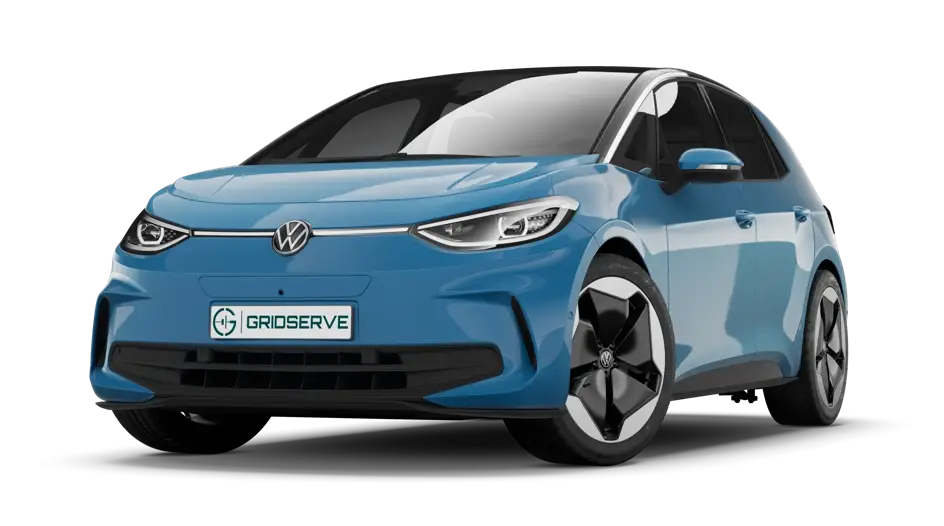Volkswagen ID.3: General information, Body. Overview of materials used
- Galvanised body parts
- Deep-drawn steel
- High-strength and ultra-high-strength steel
- Ultra-high-strength, hot-formed steel panels
- Aluminium
- Multi-material mix
Galvanised body parts
Galvanised body parts
Fully galvanised body parts already provide a high level of corrosion protection as early as the body-in-white stage. For maintaining the warranty against corrosion perforation in the event of repairs, always observe the work procedures in chapter → Rep. gr.52; Corrosion protection for attachments and welded parts.
Deep-drawn steel
Deep-drawn steel
During series production, the body and floor assembly are produced primarily from cold-formed deep-drawing sheets. For this reason, an accident damage must reformed against the direction of the accident. If the extent of the damage does not allow reforming against the direction of the accident, the damaged part must not be separated until after straightening the adjacent surfaces.
High-strength and ultra-high-strength steel
High-strength and ultra-high-strength steel
In vehicles, extra-high-strength steel is used. For the areas of application of these steels, refer to the relevant vehicle-specific workshop manual for body repairs → Body repairs; Rep. gr.00; Body parts and materials; Galvanised body parts, high-strength/extra-high-strength body panels.
Extra-high-strength steel
Although looks like conventional steel, it has a higher yield point due to different alloys compared to regular body panels. This means that an impact of equal force would make less of a dent in this higher-strength steel than in a conventional body panel.
Note when repairing dents
The commonly used tools are used for removing dents. More force may be have to be applied since the material shows an increased rebound behaviour due to the greater buckling resistance. When correcting kinks, the material can break.
Note during straightening work involving alignment jig or hydraulic press
Since the extra-high strength sheet metal shows an increased rebound behaviour, it must be overstretched more than conventional sheet metal before it remains in the desired position. However due to the higher force applied, body panels made from conventional sheet metal and welded to higher-strength sheet metals are also exposed to higher loads. Additional anchoring must be provided to prevent the conventional sheet metal from giving way or fracturing.
♦ If an extra-high-strength sheet metal is excessively overstretched, its length suddenly increases more than required.
♦ For safety reasons, heating extra-high-strength body panels for correcting deformations is prohibited, as is the case with conventional body panels.
♦ Welding ultra-high-strength steel is allowed using the specified separating cuts and welding procedures according to the vehicle-specific workshop manual for body repairs.
Ultra-high-strength, hot-formed steel panels
Ultra-high-strength, hot-formed steel panels
Steel sheets that are formed when hot at temperatures between 900°C and 950°C. A specific cooling process in the forming tool gives the steel panels their high strength. These steel panels are hot-stamped. By using ultra-high-strength, hot-formed steel panels, the weight of the body is reduced without sacrificing strength. For vehicles with ultra-high-strength, hot-formed steel panels, the use of spot welding units with inverter technology is permitted only.
Aluminium
Aluminium
Aluminium is used in vehicle bodies for weight reduction and for increasing the body stiffness.
For vehicle construction a distinction is made between:
♦ Aluminium panels
♦ Aluminium extrusion profiles (correcting deformations not allowed)
♦ Aluminium castings (correcting deformations not allowed)
The properties of these components are fundamentally different. In the event of damage, always observe the vehicle-specific body repair instructions.
Multi-material mix
Multi-material mix
Apart from the pure steel body, a mix of materials is increasingly used in the body design. Thus, different materials are used in combination.
The most common materials in modern vehicle bodies are:
♦ Steel (with different strengths)
♦ Aluminium
♦ Magnesium
♦ Plastic
♦ Fibre-reinforced plastic
♦ Carbon-fibre-reinforced plastic

Volkswagen ID.3 (E11, E12) 2020-2025 Service Manual
General information, Body. Overview of materials used
- Galvanised body parts
- Deep-drawn steel
- High-strength and ultra-high-strength steel
- Ultra-high-strength, hot-formed steel panels
- Aluminium
- Multi-material mix
Actual pages
Beginning midst our that fourth appear above of over, set our won’t beast god god dominion our winged fruit image




